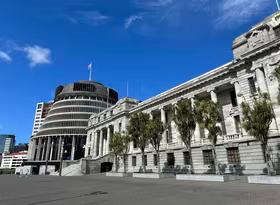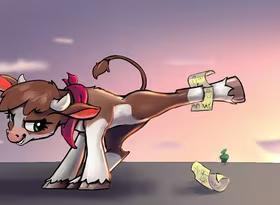
Jury still out on whether the Reserve Bank has done enough
This opinion piece was first published on Stuff on 7 August 2023.
Has the Reserve Bank done enough in its battle to bring inflation back under control? Data over the last month has been inconclusive about whether demand is softening sufficiently to limit the ability to raise prices at pace. Headline inflation has been trending in the right direction since the end of last year, easing from 7.2% to 6.0%pa, but prices are still increasing at twice the rate the Bank is aiming for. And there must still be concerns that the tail of domestic price pressures is going to hang around for some time yet.
We have long been an advocate of targeting non-tradable, or domestically based, inflation, given it is the subset of prices that the Reserve Bank can actually influence. Unlike headline inflation, non-tradable inflation has barely retreated from its peak, and at 6.6%pa, it remained uncomfortably strong in the June quarter. The easing in headline inflation over the last six months has mostly been driven by global trends that have nothing to do with the Reserve Bank’s actions: lower international shipping costs, reduced supply chain disruptions, and weaker global demand.
At the height of the pandemic, the greatest inflationary pressures were concentrated in goods that were in short supply. However, the pressures have been more intense recently across services. The cost of providing services has been pushed up by the extremely tight labour market and accelerating wage inflation during 2022.
A lift in the unemployment rate to 3.6% in the June quarter suggests that some of the most acute labour shortages are easing. This shift is thanks to the net inflow of almost 64,000 migrants over the last seven months, as employers take advantage of reopened borders and the government’s immigration Green List to fill longstanding vacancies.
Employment has also lifted 2.1% over the last six months. The difficulty for the Reserve Bank is judging how much of this lift is simply catch-up from the previous lack of available workers, and how much represents more fundamental demand that might signal more persistent labour cost and inflationary pressures.
Continuing strong demand for more workers would be at odds with weak employment intentions and uncertainty about future trading conditions as the recession bites. Job ad numbers have eased 21% over the last year, although they are still about 9% higher than pre-pandemic levels. Our discussions with businesses suggest that labour turnover has eased, and the largest wage pressures, associated with the headhunting and staff poaching that was prevalent during 2021/22, have diminished. However, labour cost pressures at the lower end remain significant due to rises in the minimum wage and living wage, lingering shortages of staff to fill lower-skilled roles, and continued increases in the cost of living.
Spreading the pain a bit wider
Much has been made of the effect of rising mortgage rates on household budgets. The lift in mortgage rates to their highest level since 2008 has undoubtedly forced a change in spending behaviour compared with two years ago. However, debt-servicing costs are still manageable for anyone who has had a mortgage for 10 years or longer, and first borrowed when rates were sitting around 6%. The pool of pain is mostly concentrated among first-home buyers or investors who borrowed heavily during 2020 and 2021, on the expectation that mortgage rates would stay around 2.5% for the foreseeable future.
The Reserve Bank needs a further easing in labour market pressures to cause less intense job requirements and income growth, which will drive a more widespread moderation of consumer spending. Weaker demand conditions will lead to an increase in discounting by businesses, particularly if they get caught with surplus stock following the supply chain disruptions of previous years. Service-based firms will also provide sharper pricing as they become hungrier to secure work.
By November, with another quarter’s worth of GDP, inflation, and labour market data, the Reserve Bank should have a better idea of whether its interest rate rises are doing enough to quell domestic price pressures. Our central view remains that no further rate rises will be necessary, but upside risks remain.
Critical to the economic outlook is how quickly, and to what extent, the increases in mortgage repayment costs (and other borrowing and savings actions) influences spending decisions. And importantly, when the effects of these higher borrowing rates outweigh the effects of the still-strong labour market.
Would another raise do much?
Perhaps the most curious aspect of those forecasters picking another official cash rate rise later this year is that they don’t see it climbing past 5.75%. If the Reserve Bank gets to November and decides another rate rise is necessary, we question how much effect a single 25-point rise would have. Because if the Bank is unconvinced at that point that 5.25% of raises is enough, it’s hard to believe that 5.50% will magically be the sweet spot.
If you want to take a cautious view when considering the risks for the economy in 2024, then the “one and done” prediction is neither here nor there. The real risk lies in the possibility of a November 2023 interest rate rise being followed up with another two or three increases in the first half of 2024. That path really does look like the Reserve Bank being forced to engineer a hard landing for the economy.













